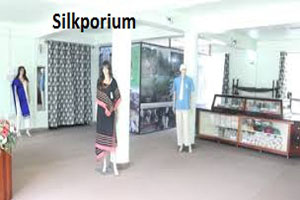
Silkporium open in Kohima to act as inlet and outlet for silk growers, weavers
YarnsandFibers News Bureau 2015-10-15 17:00:00 – KohimaAn emporium for silk products and showpieces “Silkporium†was inaugurated in capital town, Kohima by Parliamentary Secretary for Sericulture, Home Guards & Civil Defense EE Pangteang on October 13. The showcase will be open for the public on all working days during office hours and it would be acting as an ‘inlet’ as well as an ‘outlet’ for silk growers, weavers and consumers together.
Director for Sericulture, Chandan Basera, during the inauguration of the ‘Silkporium’ said that the silk from Nagaland was in ‘high demand all over the country and the department will help in outsourcing the products to help silk farmers and weavers of the state.
The Silkporium has put on display various silk products manufactured in the State and is also available for sale. Mufflers, pouches, knitted caps, tops, shawls, neck ties etc all made of silk yarns are available at the Silkporium.
An improvised rearing stand is also put on display. A flower arrangement made of ‘waste cocoons’ by a staff of the department is also on display. For local delicacy lovers one can also try the Silk Pupae pickle that is available at the Silkporium.
Silk is a natural protein fiber, some forms of which can be woven into textiles. The protein fiber of silk is composed mainly of fibroin and is produced by certain insect larvae to form cocoons. The best-known silk is obtained from the cocoons of the larvae of the mulberry silkworm Bombyx mori reared in captivity (sericulture).
Silk is produced by several insects, but generally only the silk of moth caterpillars has been used for textile manufacturing. There has been some research into other types of silk, which differ at the molecular level.
The shimmering appearance of silk is due to the triangular prism-like structure of the silk fiber, which allows silk cloth to refract incoming light at different angles, thus producing different colors.
Market Intelligence
Ask for free sample Report

experience
Customer Base
dedicated team
Countries Served Worldwide









